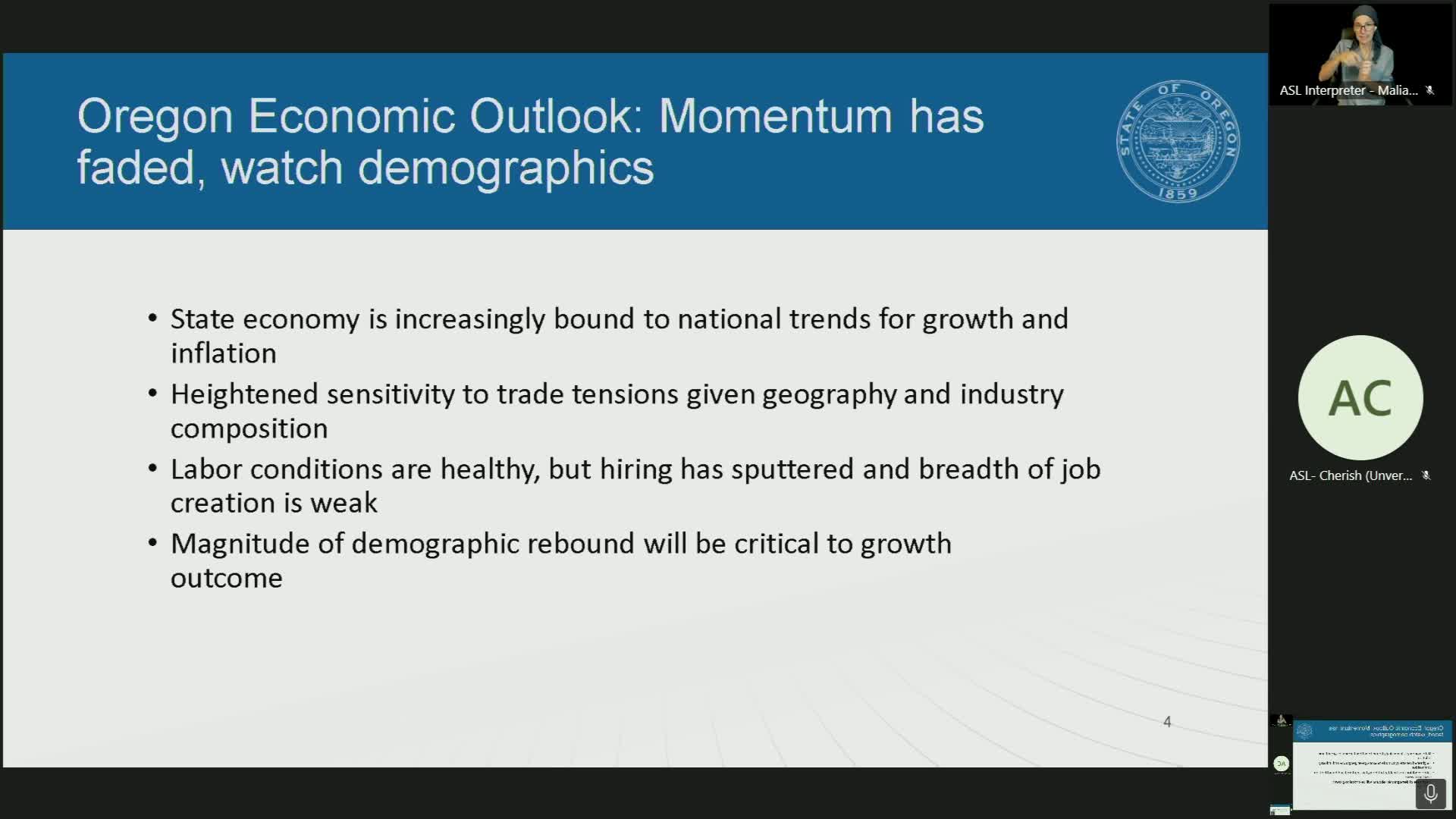Oregon economy shows signs of recovery despite job losses and inflation challenges
February 26, 2025 | Finance and Revenue, Senate, Committees, Legislative, Oregon
This article was created by AI summarizing key points discussed. AI makes mistakes, so for full details and context, please refer to the video of the full meeting. Please report any errors so we can fix them. Report an error »

During a recent meeting of the Oregon Senate Committee on Finance and Revenue, state economists presented a mixed economic outlook for Oregon, highlighting both challenges and signs of recovery. The discussion centered on the state's economic growth, which has lagged behind the national average, raising concerns about potential impacts from tariffs and other economic headwinds.
Oregon's economy grew by only 1.2% last year, a significant drop from the previous year's 3.2% growth. This slowdown has been attributed to specific challenges faced by key industries rather than broader economic issues. However, recent data suggests a potential rebound, with the last two quarters showing an average growth rate of 2.9%, compared to a contraction of 0.6% in the previous two quarters.
Despite the positive signs in economic growth, job creation remains a concern. December saw net job losses in the state, although the unemployment rate has remained stable at low levels. The ratio of employed Oregonians to the general population is at a 25-year high, indicating strong labor market engagement. This resilience in the labor market is crucial as it supports household income trends, which are vital for economic stability.
The committee also discussed the importance of monitoring inflation and consumer spending. While inflation-adjusted household income is still positive, indicating that overall earnings are outpacing inflation, industrial activity has stagnated. This mixed economic picture suggests that while some sectors are thriving, others are struggling, leading to uneven job creation across industries.
As the state navigates these economic challenges, the committee emphasized the need for continued vigilance regarding federal cutbacks and their potential effects on Oregon's labor market. The next steps will involve closely monitoring economic indicators to ensure that the state can effectively respond to both current challenges and emerging opportunities for growth.
Oregon's economy grew by only 1.2% last year, a significant drop from the previous year's 3.2% growth. This slowdown has been attributed to specific challenges faced by key industries rather than broader economic issues. However, recent data suggests a potential rebound, with the last two quarters showing an average growth rate of 2.9%, compared to a contraction of 0.6% in the previous two quarters.
Despite the positive signs in economic growth, job creation remains a concern. December saw net job losses in the state, although the unemployment rate has remained stable at low levels. The ratio of employed Oregonians to the general population is at a 25-year high, indicating strong labor market engagement. This resilience in the labor market is crucial as it supports household income trends, which are vital for economic stability.
The committee also discussed the importance of monitoring inflation and consumer spending. While inflation-adjusted household income is still positive, indicating that overall earnings are outpacing inflation, industrial activity has stagnated. This mixed economic picture suggests that while some sectors are thriving, others are struggling, leading to uneven job creation across industries.
As the state navigates these economic challenges, the committee emphasized the need for continued vigilance regarding federal cutbacks and their potential effects on Oregon's labor market. The next steps will involve closely monitoring economic indicators to ensure that the state can effectively respond to both current challenges and emerging opportunities for growth.
View full meeting
This article is based on a recent meeting—watch the full video and explore the complete transcript for deeper insights into the discussion.
View full meeting
